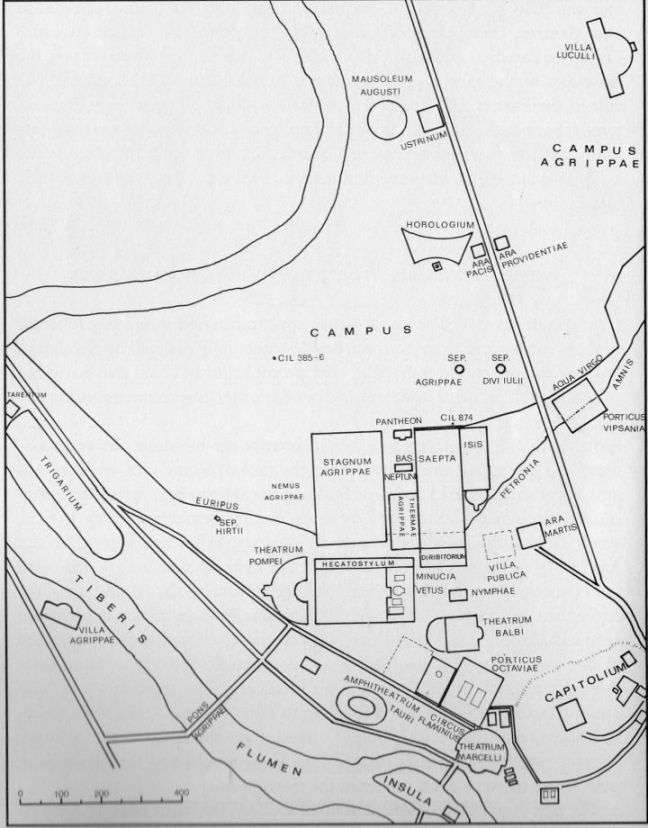
Spatial Context:

(Map of Campus Martius from Zanker 140)
Early on the Mausoleum played a key role as a piece of propaganda against Marc Antony. One accusation often leveled by Augustus against his rival was that the latter had an excessively close relation with Cleopatra and Egypt. Perhaps the most damning accusation was that Antony desired to move the capital of the Republic to Alexandria. By choosing Rome as the location for his monument, Augustus used the Mausoleum to imply his full commitment to life and death in Rome itself.
More specifically, Augustus chose to place his Mausoleum in the Northern Campus Martius. This would have been near where Augustus¡¯ troops had camped during his first, illegal march on Rome in 43 BC (Rehak 37). It would not have passed notice that the building commemorated the place where Augustus¡¯ military power had been at its most prominent display.
By choosing a location nearly a kilometer north of earlier Republican tombs, Augustus also attempted to set himself apart from the Romans before him (Rehak 36). Indeed, by choosing not to be buried in the tomb of Julius Caesar, Augustus strongly implied that he was the start a new era in Roman history. By building a dynastic tomb of his own, he also indicated the ambition to be the father of a new dynasty. And given the ability to reward loyal followers, like Agrippa and Drusus with burial in the Mausoleum, or to deny others, Augustus could explicitly define the makeup of his new dynasty (Rehak 37).
But in keeping with his public image, Augustus also ¡°modestly¡± presents himself as a continuation of Roman history. It is important to note that the mausoleum is located near the traditional location of the tomb of Romulus; in this way, Augustus appeared to respect the oldest traditions of Rome (Rehak 36). At the same time, he used the analogy to cement his status as a founder.
There were other practical advantages for the chosen location. The finished structure was by far the largest in the relatively undeveloped north Campus Martius (Zanker 73). Thanks to its position near the Via Flaminia and the Tiber River, the Mausoleum dominated all northern approaches to the city of Rome. The monumental structure would have been the first thing that travelers saw of Rome (Strabo 5.3.9). Indeed, its location and scale made the Mausoleum an unmistakable reminder of the greatness of the man whose remains were housed within.
